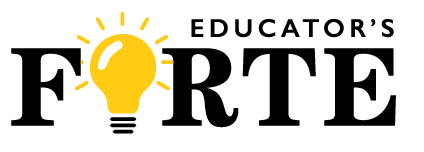Designing Better Teacher Training
In the first installment in the Designing Better Teacher Training, we focused on strategies related to learning new concepts. However, much teacher training is focused on learning complex skills and processes that are used during classroom instruction. Consider topics such as effective questioning techniques, using effective teacher language, or implementing alternative assessments (among many others).
Introducing a new skill to teachers is different from effectively teaching it. While introducing a skill provides an overview and basic understanding, teaching a skill with the expectation of any level of proficiency from the teacher requires a more comprehensive approach. In this article we’ll explore research-based practices to facilitate adult learning, retention, and implementation of new skills and processes in the classroom.
One and Done Skill Training: It’s All Uphill

Learning and effectively implementing a new skill is a complex process for our brains. A typical “one and done” training session that focuses on skill acquisition is akin to attempting to scale an entire mountain at once where there is a constant steep incline and never an opportunity to level out and breathe. Approaching skills training (or hiking!) in this way leads to frustration, discouragement, and often an overwhelming sense of defeat. Learners may struggle to grasp the new information and will almost certainly fail to apply it effectively in their teaching practice.
The Journey of Skills Acquisition: Making the Mountain Manageable

Breakdown the Skill
Effective skills training follows a different approach—a trail that breaks up the mountain into manageable sections. Similarly, complex skills need to be approached in smaller chunks of learning. A broad overview may be appropriate, but be cautious not to overwhelm the learner with all the details at once.
Model and Demonstrate
A first-time hiker is likely to need some preliminary instruction before taking the first step on the trail. Likewise, a first step in skills training is to show teachers how to perform the skill effectively through modeling and demonstrations.
Practice, Feedback, Refine
As the journey begins, the ascent should be gentle, allowing the learner to comfortably ascend while acquiring the initial knowledge and understanding of the skill or process. This phase is like hiking up a slight incline—a challenge that is within the learner’s current ability.
Before long the trail levels off. Here learners have an opportunity to pause, practice, receive feedback, reflect, and refine their understandings. This level spot represents a crucial phase of integration and consolidation where the learner has opportunities to apply newly acquired knowledge in practical scenarios and receives feedback to refine their approach. The learner feels accomplished, and this early success builds confidence and resolve to keep going.

Learners are ready to tackle the next incline—a slightly steeper challenge that builds upon and extends their existing knowledge and skills. This additional learning, or incline, is more challenging than the first, but because it is broken into a small chunk requiring a relatively short, sustained effort, the learner does not become easily discouraged. And before long, another leveling point is reached allowing time for practice, feedback, reflection and refinement.
This cycle of new learning (practice, feedback, refinement—new learning—practice, feedback, refinement…) continues as the learner becomes proficient with the new process. By providing appropriately challenging yet manageable chunks of learning, the learner can experience a sense of accomplishment and growth. This balance between ability and challenge is crucial in keeping learners engaged and motivated. Too much challenge without enough practice leads to frustration and disengagement. Conversely, too little challenge leads to boredom and disengagement. The right balance is important.
How Much Practice and How Often?
If the skill or process involves many variables or is scenario-dependent, it is crucial to provide learners with opportunities to practice different scenarios. This variation in practice helps learners generalize their skills and apply them effectively in diverse situations.
If a skilled needs to become an automated behavior, numerous practice opportunities with feedback are necessary. Learners need to engage in repetitive practice sessions to internalize the skill or process and make it automatic. Each practice/feedback session is like taking steps on the trail, gradually building muscle memory and expertise.
How often and how far apart practice opportunities should come really depends on the complexity of the skill and the purpose for learning the skill. Initial practice may come in the initial training session, but additional practice should be spaced over time. Intensive training might include formal practice, observation, and feedback every day for a week. Or sessions may be spaced out over many days or even a couple of weeks. The important thing to remember about timing is that if all the practice sessions are crammed into a short span of time, there will be diminishing returns on the effort. The learner will not have adequate time to reflect and find their way forward. On the flip side, practice opportunities that are spaced too far apart may result in the learner forgetting key steps or even losing interest altogether.
Delivering Feedback

Feedback plays a critical role in the learning process. It is designed to guide and support learners as they refine their skills or processes over time. Effective feedback prevents learners from practicing something incorrectly and helps them make adjustments to their approach.
When providing feedback, it is essential to make it specific and supportive. Specific feedback acknowledges progress and highlights areas for improvement, providing actionable suggestions for enhancing performance, and encourages learners to continue their efforts.
There are many ways to provide feedback, depending on the nature of the practice. Some alternative methods include:
- Peer Feedback: Learners can engage in peer-to-peer feedback sessions, where they provide constructive criticism and suggestions to each other. This promotes active engagement, collaboration, and a deeper understanding of the skill or process.
- Self-Reflection: Learners can engage in self-reflection exercises where they analyze their own performance, identify strengths and weaknesses, and set goals for improvement. Journaling or video recordings can be effective tools for facilitating self-reflection.
- Mentorship or Coaching: Pairing learners with experienced mentors or coaches provides valuable guidance and personalized feedback. Mentors can observe learners in action, provide specific feedback, and offer ongoing support and encouragement.
Classroom Application: Reaching the Summit
Facilitate the connection between training and classroom application by providing opportunities for teachers to implement new skills in the classroom with formal observation. Although this may be the point at which you call the training cycle officially ended, remember that effective implementation of anything on the job requires a long-term sustained focus. While this is something of a summative step in the training process, to stay on ‘top of the mountain’ teachers need to know that this new skill they’ve expended a great deal of energy to learn and implement is still an important focus for school leadership. Keep that light shining with regular visits to the topic in staff meetings, occasional check-in meetings, and/or including ongoing goals for growth and development in teacher’s individual professional development plans.
